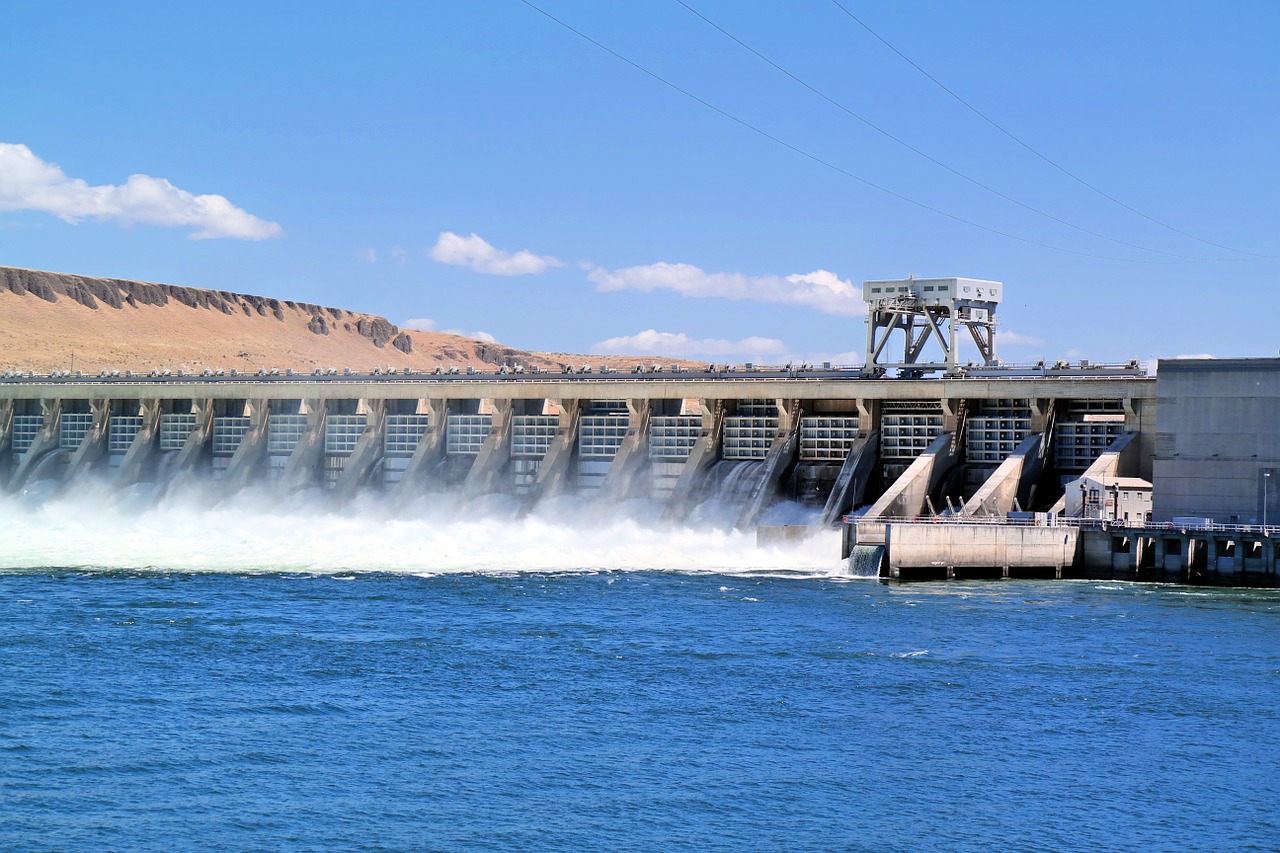For centuries, the Tigris and the Euphrates rivers have shaped life in Iraq and the entire Middle East, creating a fertile, green area in a region where this kind of environment is uncommon. However, these vital waterways often provided too much water (resulting in flooding) or too little water (leading to drought).
When countries north of Iraq started building dams on the Euphrates in the 1970s, Iraq was left with a dry river bed and desolated agricultural communities. To ensure a constant supply of water, and to generate power for its communities, Iraq, under the direction of Saddam Hussein, began to construct a hydroelectric dam on the Tigris. This dam would eventually be known as the Mosul Dam.
Unfriendly Ground
Geologists had great difficulty finding a suitable site for the project because there weren’t many locations that had the appropriate topography: a low-lying space between mountains. In addition, the rock layer underneath much of the ground was riddled with gypsum, a type of rock that dissolves in water. Dams constructed on this kind of mineral tend to develop holes in their foundations.
Despite these concerns, Iraqi leaders decided in 1981 to construct the Mosul Dam at a site just north of its namesake city. Iraqi leaders chose this location because it could hold the most water. It only took Chinese workers three years to erect the dam, which is nearly 2 miles long dam and just under 400 feet high. By 1985, the Mosul Dam—called the Saddam Dam at that time—was in place, and the 8-mile reservoir behind it filled with more than 14.3 billion cubic yards of water.
Immediate Problems
It didn’t take long for the gypsum foundation to become problematic. All dams experience some amount of leaking. This phenomenon is called “seepage.” But the Mosul Dam had a problem much larger than standard seepage: the land around the dam was collapsing under the enormous pressure of the water.
A Temporary Solution
The Iraqi government immediately initiated a process to fill the holes in the dam’s foundation with cement. This process, called “grouting,” is far from an exact science. Workers operating the grouting devices can’t see the holes they are filling and must use pressure gauges to identify where the holes are and estimate how much cement they need to fill them.
However, grouting is not a permanent fix. A full-time staff must work day and night to keep the dam stable. In a politically uncertain country, this proved to be an unrealistic expectation.
In 2014, a military conflict required the grouting staff to abandon the dam for more than 40 days, during which time the grouting process ceased. A US Army Corps of Engineers report completed when the dam was safe to reoccupy showed that this grouting-free period had caused major damage to the dam’s foundation.
The Threat
According to a 2006 report by US Army Corps of Engineers, if the dam were to fail, a massive wall of water 100 feet high would be released, taking out everything in its path and threatening the lives of over 1 million Iraqi citizens living along the Tigris. Flood damage could spread hundreds of miles away from the dam, and parts of Mosul could be under water in mere hours. In a few days, flood waters of up to 16 feet would even reach Baghdad. Although they remained skeptical of the report’s findings, Iraqi government officials agreed to reduce pressure on the dam by lowering its water level by 30 feet.
An Unfinished Safety Net
When Iraqi officials realized the instability of the dam shortly after its completion, they began building an emergency dam to act as a safety net in the case the end of the Iran-Iraq War, and the economic aftermath of that conflict has precluded further work on the project.
Present Day
In 2016, the Iraqi government hired a group of Italian engineers to improve the Mosul Dam and provide the Iraqis with equipment for the dam’s maintenance. However, they have not yet started their repairs, and government officials have only taken small steps to prepare for a mass evacuation in the case of the dam’s collapse.
Infrastructure and Politics
The Mosul Dam is caught in a tug of war between the various factions at play in Iraq. Some say it poses a major risk, and others argue the dam presents no significant threat. Regardless of its current condition, the dam is an example of how politics and power struggles can dramatically affect the development of infrastructure.

